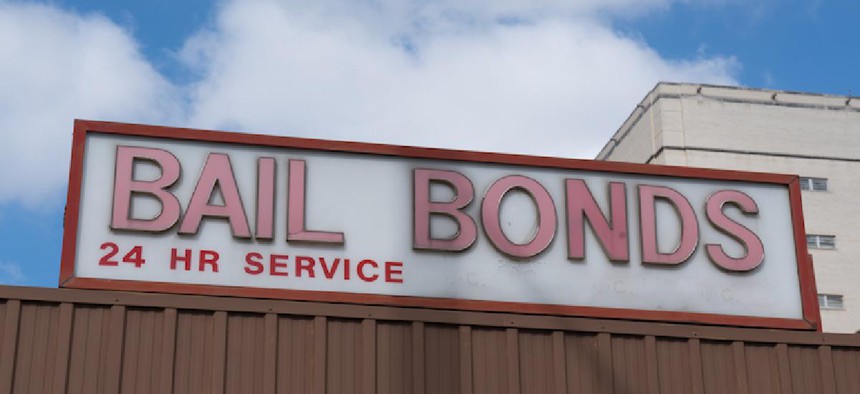Across New York City, people sit in jail because they can’t afford the cash bail set in their case. To most New Yorkers, $5,000 bail, let alone $50,000, is out of reach. But what if people were required to put down no more than 10 percent of the total bail amount? Or, were not required to put down any money upfront, based on a promise to be liable for the full amount should they not come back to court?
Under New York law, judges can, in fact, set bail in this way. Colloquially called “alternative forms of bail,” they include partially secured bonds, which require a fraction of the bail to be posted, and unsecured bonds, which require no money upfront. Despite these options, cash bail and an insurance company bail bond are the most common forms of bail used in the New York City criminal courts. As a public defender in the Bronx, despite asking on many occasions, I was successful only once in getting a partially secured bond granted at arraignments, in my five-year career. It was Thanksgiving morning and my client was a young mother with no prior record who was anxious to get out, so she could be with her children. I made the bail application of my life, and the judge was feeling charitable. Needless to say, this was not your average, run-of-the-mill case.
The question of why partially secured and unsecured bonds rarely if ever get used, even though they’re as valid a form of bail as cash, was the impetus for a new report by the Vera Institute of Justice, "Against the Odds: Experimenting with Alternative Forms of Bail in New York City’s Courts." We trained public defenders across the Bronx, Brooklyn, Manhattan, and Queens on how to request these forms of bail, and documented every case over the course of three months in which a judge imposed a partially secured or unsecured bond. We then tracked those cases and analyzed their outcomes: how many people made bail? How many returned to court? How many were rearrested during the pendency of their case? How were those cases resolved?
First, a caveat: Only 99 cases were granted an alternative form of bail out of thousands on which bail was set in the three months of the experiment. That’s a miniscule number compared to the overall volume of cases that pass through New York City’s courts. However, the results from this tiny cohort were promising. Over two-thirds were able to post bail when a partially secured or unsecured bond was set. Judges didn’t limit their use of these forms of bail to only the “low-hanging fruit,” or nonviolent, low-level charges. Over half of the cohort were charged with a felony offense, both violent and nonviolent. Those released had a court appearance rate of 88 percent and a rate of pretrial re-arrest for new felony offenses of eight percent. Moreover, a third of released cases ended up in a dismissal, and another fifth resolved with a violation – which spares the person a criminal record.
What do these results suggest? Certainly that using these less onerous forms of bail allow more people to make bail. That’s common sense. But what these results also suggest is that people don’t need large sums of money hanging over their heads, or perhaps any money at all, to comply with their pretrial court obligations.
In New York City, we’re at a remarkable moment of consensus that Rikers Island must be closed and our criminal justice system is ripe for transformation. In Albany, there is talk of significant bail reform. Within that larger universe, alternative forms of bail are one small measure that can be taken right now, without any sweeping reforms to policy or state law, to safely increase the numbers of people released pretrial. We can, and should, do this, as one more tool in the arsenal of strategies – including community bail funds, expanding pretrial supervision, and expediting bail payment options – already at work in New York City’s criminal justice system to preserve liberty for as many people as possible.
Stakeholders should be educated about alternative forms of bail, the paperwork required should be simplified, judges should routinely set an alternative form as an option in addition to traditional forms of bail and they should conduct an individualized inquiry into a person’s ability to pay whenever bail is set. We’ve already begun to implement some of the report’s recommendations, including judicial trainings and a new pilot to assess ability to pay and expand the use of partially secured and unsecured bonds will soon be up and running.
What we learned in "Against the Odds" reinforces what recent research demonstrates all too clearly – money alone shouldn’t determine a person’s pretrial liberty. It is a fundamental, inexcusable injustice that poor people are deprived of their freedom simply because they cannot afford it. Expanding the use of alternative forms of bail is an important, and necessary, small measure to making the use of bail fairer in the short term. One thing we know is that small measures are important stepping stones for real transformation.
Insha Rahman is the project director for the Vera Institute of Justice.


